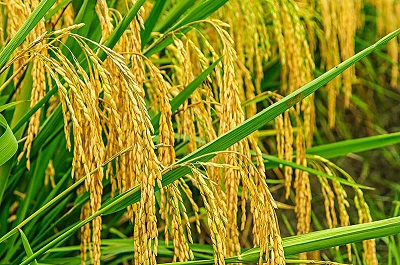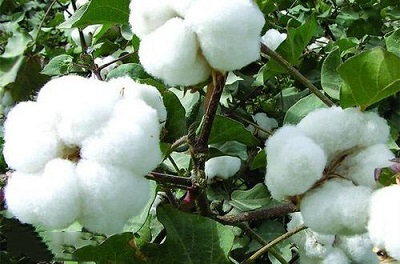What Is Plant Growth Reg?
plant growth reg of SHIJIAZHUANG POMAIS TECHNOLOGY CO.,LTD is well-designed to delivers greater usability, relevant functionality, improved aesthetics. We carefully monitor every step of production from material selection to inspection before delivery. We only select the most appropriate materials that not only meet the customer and regulatory requirements but also can maintain and maximize the overall performance of the product.
Although the competition is becoming increasingly fierce in the industry, POMAIS still maintains a strong momentum of development. The number of orders from both domestic and foreign market continues to increase. Not only the sales volume and value are increasing, but also the selling pace, showing the greater market acceptance of our products. We will work continuously to produce innovative products to meet wider market demand.
Through POMAIS, we will precisely grasp customer challenges and precisely deliver them the right solution with plant growth reg and suchlike products based on our commitments.
Features
1. Inhibit vegetative growth, promote reproductive growth, promote lateral bud growth and rooting, and keep stems and leaves dark green.
2. Control flowering time, promote flower bud differentiation and increase fruit setting rate.
3. Promote the accumulation of sugar and dry matter, promote fruit color change and improve storage tolerance.
4. It has the effect of shortening plant nodes and resisting lodging.
5. Reduce herbicide damage, improve plant resistance to cold, drought and disease, and ultimately achieve the purpose of increasing yield and improving quality.
Application
Prohexadione calcium can not only reduce the height of rice plant, shorten the length of plant internodes, but also increase the number of grains in the panicle at a lower dose, with a significant increase in yield and no residue.
Prohexadione calcium acts on wheat to dwarf plant height, reduce internode length, increase stem thickness, increase ear length, 1000-grain weight and increase yield.
Prohexadione calcium at a suitable concentration has a certain regulatory effect on improving the accumulation and distribution of cotton biomass, increasing yield and improving quality.
Prohexadione calcium has a dwarfing effect on ornamental plants such as chrysanthemum and rose, and can also adjust the color of plants.
Title: Plant Growth Regulators Category: Pesticide Sources: China Plantation Grand View · Pesticide Rolls Plant growth regulators are a class of substances that have similar physiological and biological effects as plant hormones.
It has been found that substances regulating plant growth and development are amine fresh ester (DA-6), chlorpyrifos, sodium nitrophenolate, auxin, gibberellin, ethylene, cytokinin, abscisic acid, brassinolide. Salicylic acid, jasmonic acid, paclobutrazol and polyamines, etc., and used as plant growth regulators in agricultural production are mainly in the top nine categories.
1. The dosage should be suitable, and the dosage should not be increased arbitrarily. Plant growth regulators are a class of substances that have similar physiological and biological effects as plant hormones and cannot be used in excess. Generally only a few grams or a few milliliters per acre. Some farmers are always afraid that the amount of use is small, and there is no effect. If you increase the dosage or use the concentration at will, it will not promote the growth of the plant, but will inhibit its growth, and even lead to malformation, dryness, and death of the whole plant.
2. Can not be mixed at will. Many vegetable farmers use the plant growth regulator to save time and often mix it with fertilizers, pesticides, fungicides, etc. Whether plant growth regulators and chemical fertilizers, pesticides and other substances can be mixed, must be carefully read and used after testing, can not be determined, otherwise it will not achieve the role of promoting growth or preservation of flowers and fruits, supplement fertilizer, but will be improperly mixed A phytotoxicity has occurred. For example, the ethephon solution is usually acidic and cannot be mixed with alkaline substances; the amine fresh ester is easily decomposed by alkali and cannot be mixed with alkaline pesticides and fertilizers.
3. The method of use should be appropriate. Some vegetable farmers often do not read the instructions carefully before using the plant growth regulator, but use the plant growth regulator directly with water. Whether it can be directly watered must be seen clearly, because some plant growth regulators can not be directly dissolved in water, if not prepared into the mother liquor and then formulated into the required concentration, the agent is difficult to mix, will affect the use of the effect. Therefore, it must be diluted in strict accordance with the instructions for use.
4. Growth regulators are not a substitute for fertilizer application. Growth regulators are not plant nutrients. They can only regulate growth and cannot replace fertilizers. In the case of insufficient water and fertilizer conditions, spraying too much plant growth regulator is harmful. Therefore, when plant growth is found to be poor, it is first necessary to strengthen the management of fertilization and watering, and on the basis of this, the growth regulator can be used to effectively exert its effects.
5. Plant growth regulators are pesticide products. The product packaging must have a formal "three pesticides" and the labeling zone is yellow.
6. Strictly follow the instructions and take protective measures to prevent the impact on people, livestock and water safety.
1 Wide range of applications, many applications. Plant growth regulators can be applied to almost all high and low plants in the crop industry, such as field crops, vegetables, fruit trees, flowers, trees, kelp, seaweed, edible fungi, etc., and regulate the photosynthesis, respiration, Material absorption and operation, signal transduction, stomatal opening and closing, osmotic adjustment, transpiration and other physiological processes regulate the growth and development of plants, improve the interaction between plants and the environment, enhance the resilience of crops, and increase crop yields. Improve the quality of agricultural products, so that the expression of crop agronomic traits develops in the direction of people's needs.
2 Small dosage, fast speed, high efficiency, less residual toxicity, most crops only need to be sprayed once every one season.
3 Can regulate the external traits of plants and internal physiological processes.
4 Targeted and professional. It can solve problems that are difficult to solve by other means, such as forming seedless fruits, controlling windy winds, controlling plant type, promoting rooting of cuttings, ripening and coloring of fruits, inhibiting growth of axillary buds, and promoting cotton leaf detachment.
5 The use effect of plant growth regulators is affected by many factors, and it is difficult to achieve the best. The climatic conditions, the time of application, the amount of drug used, the method of application, the site of application, and the absorption, operation, integration and metabolism of the crop itself will affect its effects.
Glyphosate is a popular herbicide used to control a wide range of weeds. However, if you're planning to plant vegetables or other crops in an area where you've recently applied glyphosate, it's important to know how long you should wait before planting. The waiting period depends on several factors, including the type of glyphosate used, the soil conditions, and the specific vegetables you're planning to plant.
Glyphosate and Its Effect on Soil
Glyphosate is a systemic herbicide that is absorbed by the plants and interferes with their ability to produce essential proteins. Once applied, glyphosate is typically broken down in the soil by microbial activity, which reduces its residual effects over time. The breakdown process can vary depending on environmental factors such as temperature, soil type, and moisture.
Because glyphosate is designed to target plants, it does not usually harm soil directly. However, it is important to allow time for the herbicide to degrade before planting sensitive crops, such as vegetables, to avoid potential damage.
General Guidelines for Planting Vegetables After Glyphosate Use
-
Wait Time Recommendations
- For Annual Vegetables (e.g., tomatoes, lettuce, carrots): A waiting period of 7 to 14 days is typically recommended before planting annual vegetables after applying glyphosate. This allows enough time for the herbicide to break down in the soil, reducing the risk of damage to your crops.
- For Perennial Vegetables (e.g., asparagus, rhubarb): Perennial vegetables may require a longer waiting period of 2 to 3 weeks, as they are more sensitive to residual herbicide in the soil.
-
Soil and Environmental Conditions
- Soil Type: The breakdown rate of glyphosate can vary based on the type of soil. Sandy soils may allow the herbicide to break down more quickly, while clay or loamy soils may retain it for a longer period. If your soil is particularly heavy or compacted, you may need to wait longer before planting vegetables.
- Moisture and Temperature: Warm, moist conditions promote faster breakdown of glyphosate, while cooler or drier conditions may slow the degradation process. If you’ve applied glyphosate during a dry period, consider waiting a bit longer to ensure that the herbicide has had enough time to dissipate.
-
Replanting Guidelines
- Most labels for glyphosate recommend that gardening or planting of vegetables should occur at least 7 days after the application of the herbicide. However, always check the specific instructions on the product label for precise guidance, as there can be slight variations depending on the concentration and formulation.
Key Considerations for Safe Planting After Glyphosate Use
-
Application Rate and Concentration
- The concentration of glyphosate you use will affect the residual levels in the soil. A more concentrated solution may take longer to break down, so if you’ve used a strong dose, it's best to wait a little longer before planting.
-
Weed-Free Area
- If you’ve used glyphosate to clear an area of weeds before planting, make sure the area is thoroughly dry and free of any visible herbicide residue before sowing your seeds or transplanting seedlings.
-
Follow Product Label Instructions
- Always follow the guidelines provided on the herbicide product label for the best results. Glyphosate manufacturers usually provide specific replanting intervals based on field trials, which will be your safest bet.
Symptoms of Glyphosate Damage in Vegetables
Even with the proper wait time, if you plant vegetables too soon or the soil retains too much of the herbicide, you may notice the following symptoms of glyphosate damage:
- Yellowing or wilting of plant leaves
- Stunted growth or deformed plants
- Root damage, especially in sensitive crops like tomatoes, peppers, and cucumbers
If you observe these signs, it may be necessary to wait longer or amend the soil to reduce herbicide residue.
Conclusion
In general, it’s safe to plant vegetables 7 to 14 days after applying glyphosate, depending on the type of vegetable and environmental conditions. For more sensitive plants or those in heavier soils, a waiting period of up to 3 weeks may be required. Always check the product label for the most accurate and up-to-date replanting guidelines to ensure the health and safety of your crops.


